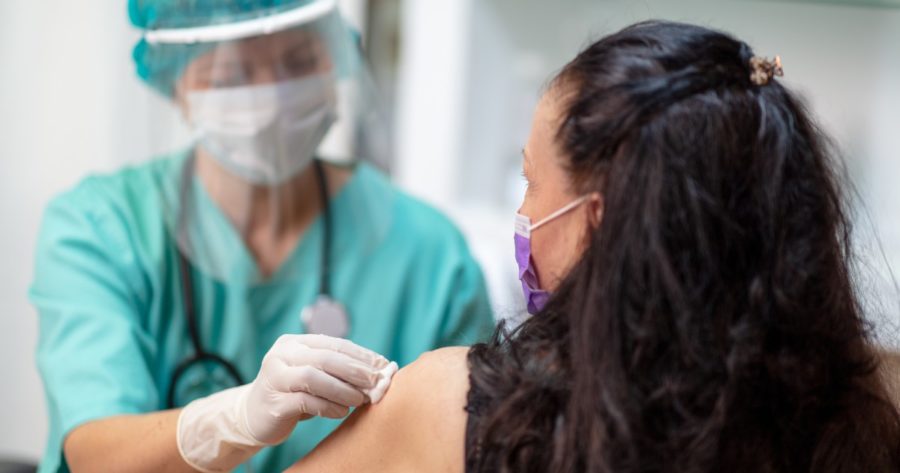The History of COVID-19
It’s hard to believe it’s already been approximately two years since the start of the COVID-19 pandemic. The world of COVID-19 is constantly changing, from the stay-at-home order, to the vaccines and multiple variants that have emerged, to our lives.
The coronaviruses are a large group of viruses that cause upper respiratory illness, similar to the common cold. COVID-19, named for its emergence in 2019, is a disease characterized by a virus called SARS-CoV-2, first appearing in Wuhan, China on December 31st, 2019. As the cases in China increased, the rest of the world perceived COVID-19 as a minor threat localized in China. However, on January 20, 2020, the Centers for Disease Control and Prevention(CDC) confirmed the first U.S. case of COVID-19 in Washington State. Soon after, the disease spread rapidly throughout the country.
On March 13th 2020, two days after the World Health Organization (WHO) categorized the disease as a pandemic, former President Donald J. Trump declared COVID-19 a nationwide emergency. This led to the closure of schools across the country, one of the many being Dublin High School. What posed to be a harmless two week break from school became a permanent disruption for the spring semester. Districts struggled to compensate for the loss of in person school and turned to distance learning.
Also on March 13th, the WHO claimed Europe as the epicenter of the pandemic. On and off stay at home orders, travel restrictions, complete lockdowns, and advice on proper handwashing techniques were only some of the recommendations that eventually became customary. The WHO also released guidance on proper mask-wearing, as growing evidence supported the role of aerosols in the spread of the disease.
By April 2nd 2020, global COVID-19 cases had reached an astounding one million. Hospitals across the nation struggled to treat patients as a shortage of protective personal equipment (PPE), ventilators, and beds became profound roadblocks. Death rates had also begun to rise drastically. In May of 2020, the United States’s coronavirus death toll surpassed 100,000. Additionally, the development of the Lambda variant in August 2020 and Alpha variant in September 2020, led to an increase in death rates, suggesting that the virus itself was constantly mutating. In other words, the race to develop a vaccine was extremely vital.
The first human COVID-19 vaccine trials begun with the Moderna mRNA vaccine in March of 2020. On April 30th, former President Trump introduced Operation Warp Speed, an initiative that aimed to produce a vaccine as soon as possible, with the CDC playing a major role. By November 2020, Moderna, BioNTech, and Pfizer vaccines had achieved an efficacy of over 90%. The University of Oxford and AstraZeneca COVID-19 vaccines were also shown to be effective. A month later, on December 31st, the WHO issued its first emergency use for a COVID-19 vaccine, which made the Pfizer/BioNTech, and soon the Moderna and Oxford/AstraZeneca vaccine, available to those 16 and older. In order for consistent effectiveness of the vaccine, booster shots needed to be obtained six months after completing both dosages of the vaccine.
The U.S. had administered over 200 million vaccinations by April 2021 and the Food and Drug Administration (FDA) allowed the usage of the Pfizer/BioNTech vaccine to adolescents aged 12-15 by May 2021 (CDC ). Later in October 2021, the FDA amended the EUA for the use of the Pfizer/BioNTech COVID-19 vaccine in children aged 5-11. It’s important to note that dosage of the vaccine varied based on age, as did the time period between the first and second dose.
However, despite this recent development, COVID-19 cases were still prevalent, especially because of the new delta variant which was first identified in India in late 2020. A substantial uprise in occurrences of COVID-19 led the CDC to reestablish guidelines they were previously lenient on 一 such as the order to wear masks indoors regardless of vaccination status. It was determined that the delta variant may cause more infections and spread faster compared to the original SARS-CoV-2 strain that causes COVID-19. While this was certainly alarming, the introduction of the omicron variant in late November posed an even larger threat. This variant is said to spread even more easily than the delta variant, making mask-wearing, vaccinations, and social distancing even more important.
Your donation will support the student journalists of Dublin High School. Your contribution will allow us to purchase equipment and cover our annual website hosting costs.

Saanvi Aneja is a current sophomore at Dublin High School, and is one of the many staff writers at the Dublin Shield. She has always enjoyed challenging...



































